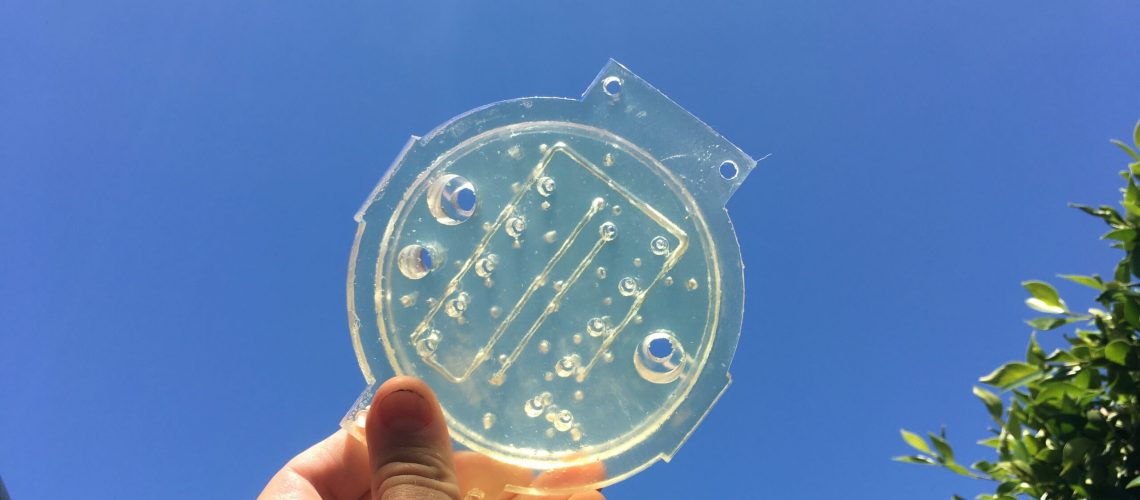It’s an unprecedented time for everyone, including the scientists and engineers who work on Icefin. Being away from our labs and workstations means the Icefin team members have to get creative with remote-sciencing to keep things moving forward in the time of Covid-19.
For some, that means engineering complex electronics on a fold-out table, for others it’s meant commandeering the living room or front porch for a quiet place to concentrate on data analysis and research. Wherever our team members are social distancing, we’re still remote-sciencing. Here’s what that looks like… multimeters, kiddie pools, computers, cats, and all!
Icefin’s Lead Electrical Engineer Daniel Dichek has been working on building and testing battery hardware on his home workbench.

Postdoc and NASA Postdoctoral Program Fellow, Icefin’s Andy Mullen has been working in his home electronics lab setup. “I’ve been working on the software and electronics for a custom underwater microscopic imaging system for observing microbes in the ocean aboard Icefin. The internal components and underwater housings of the microscope are on the blue mat on the table,” he said.

Along with working on the microscope itself, when the microscope needed a stand, Andy got creative while working from home and made one for it using LEGOS. He already had some at the house and they worked perfect!

The microscope needed a stand so Andrew Mullen got creative while working from home and made one for it using LEGOs. 
A full view of the microscope stand Andrew Mullen built with LEGOs.
He’s also been doing some 3D printing from home. “I have been making a manifold to route water for the custom water sampler that is being developed for Icefin.” These are pictures of the manifold at different stages of its fabrication: an empty 3D printer, the finished manifold still in the 3D printer, showing the manifold’s internal channels by holding it up to the sun, tapping the manifold holes, the manifold done with solenoids attached.

The empty 3D printer. 
The finished manifold still in the 3D printer. 
The manifold’s internal channels are seen by holding it up to the sun. 
Tapping the manifold holes. 
The finished manifold with solenoids attached.
Graduate Student and Icefin Engineer Ben Hurwitz enjoyed working outside on his patio, complete with a kiddie pool, on a beautiful 85°F day in Atlanta.

Icefin Primary Investigator and Lead Scientist Dr. Britney Schmidt has a purrrfect home office setup, can you spot the cat?
Frances Bryson is working on sampling systems for under ice environments, for both Icefin and VERNE projects. The arm here is a basic prototype Frances is using to act as a proof of concept and test out software and controls for a version that will eventually go on Icefin.
Research Engineer Anthony Spears has no shortage of screens in his home remote-sciencing setup!

During social distancing, Research Scientist Peter Washam is looking into ocean circulation data from beneath Thwaites Glacier and Ross Ice Shelf, near the grounding line of Kamb Ice Stream. “The flow beneath in the ocean cavity beneath these two large bodies of ice is very different, with tides primarily moving water in an elliptical motion beneath Ross and freshwater production from melting apparently driving the circulation beneath Thwaites,” he said.

Graduate Student and Icefin Scientist Justin Lawrence is using Icefin’s custom data visualization dashboard to look at water column temperature and salinity under the Ross Ice Shelf.






